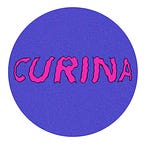My first delve into the realm of “fake art” was when I was 16. I was in the lobby of my home county’s courthouse (don’t worry I wasn’t in trouble) when I noticed that at some point, whoever was in charge had decided to stop having portraits painted of the judges and instead opt for photographs.
Surprisingly, this was rather hard to notice. Not only were the portraits fairly high up and in the same sort of ornate frames, but care had been taken to paint a layer of textured gesso over the top. The intention was to create the appearance of a painted surface. I thought this odd at the time, but as it turns out this would only be the first of many encounters with paintings that were really not painted. Many an office decoration has turned out to be a print covered in tiny clear brushstrokes.
There is a theme through these encounters. It’s the idea that a print can be made “more of” by passing it off as a painting, which begs the question: are artworks lacking in handmade appearance valued less? What does mass production of art mean in relation to the handmade, and can the appearance of it mean a work of art has more or less cultural value?
Hotel Art
The gold standard for mass produced art has to be hotel art, which ironically enough, is shifting away from dusty kitsch landscapes and towards localized black and white photographs. However, the image so often associated with hotels is that of an kitsch landscape or flower with the appearance and texture of an oil painting. If you’ve ever looked closely at these paintings, though, you might notice that many of them are printed on canvas and then gessoed over in the same way as those courthouse portraits I saw years ago. But this is only a recent development. Until around twenty five years ago, basic hotel and motel art was printed as posters from a selection that came in catalogs. With current printing technology, it’s possible to choose from an even more vast selection of art images and print them on a variety of surfaces.
Unknown to most who participate in the world of art galleries and shows, there is a world of artists who choose to produce paintings specifically to appeal to the widest audience for use in hotels and for commercial sale at low cost. Artist John Cerasulo explains in an interview with Atlas Obscura that he paints for a wider retail audience than most artists in the fine art world, finding his broad appeal to be far more substantial. His art, once completed, is scanned and printed on canvas.
A company quite literally called “The Hotel Art” has a product catalog available on their website, boasting design customizability, production scale, and timeliness. Their roster of unnamed designers put together collections of mostly abstract works in multiple mediums that are created according to the specificities of the client in production facilities.
The Oil Paint Village
However, if you wish to own a bona fide oil on canvas reproduction of the starry night or water lilies, you might turn
to the art world of Dafen, a Chinese village that produces 60% of the world’s oil paintings. There, studios ranging from small to factory sized mass produce oil paintings according to specific orders. Thousands of painters produce identical portraits, landscapes, still lifes, etc., which are sold for affordable retail pricing across the world.
If you were to order a reproduction of the Mona Lisa, for example, you likely would receive a painting made by someone who paints only Mona Lisas and many Mona Lisas every day. Your Mona Lisa would come into being amongst a lineup of it’s sisters as the painter works their way down the line, adding the same stroke to each one after the other.
Our Dafen artist isn’t the only one who works in a factory.
Andy Warhol’s studio, known as the factory, produced art in a not too dissimilar fashion. Warhol’s process consisted of silk screening many of his works, creating multiple iterations that mimicked the mass production of labels and other graphic design elements on commercial products.
Often, the actual screen printing process was done by assistants, and not by Warhol himself. Warhol’s works are undoubtedly commercially valuable -some of his works have sold for upwards of 100 million dollars- and his artworks are some of the most well known works of art of the 20th century, meaning they are socially valuable as well.
So What does it all mean?
Still, there is a formidable difference between screen printed Warhol and those same works digitally printed on poster board. The originality of the concept must be taken into account, as well as the number of what could be considered “original” reproductions there are in circulation; i.e if the artist themselves made copies of their work, how many there are, and the difficulty/method of those reproductions.
The question should not be whether or not something is handmade, but if it has the “hand of the artist”- if through one method or another, the original creator has a personal mark or connection with the physical work. Mass produced art can be both handmade and impersonal as well as machine/worker made and highly connected to the artist. The method of production for an artwork isn’t what makes or breaks it value wise. So, while I would have preferred that those portraits of judges were painted, it does not make them less important than their peers. They’re just an imprint of the reallocation of funds in municipal government, and that’s an issue for another time.
